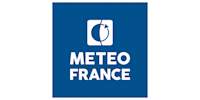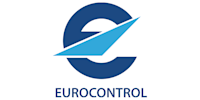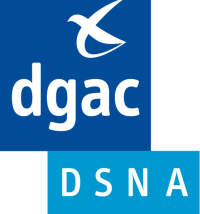TBS deployment at Paris CDG
Timeline


Description
DSNA is responsible for approach, runway and ground control at CDG (Charles de Gaulle airport). Several actions and projects are conducted at Paris CDG airport with contribution from several stakeholders coordinated within the CDM framework, to improve throughput and safety in a global roadmap planned up to 2024. Within the roadmap, Time-Based Separation (TBS) solution is identified as one major enabler for DSNA’s contribution to the roadmap.
In this respect, DSNA contributed to SESAR2020 PJ02 work programme, whose
intermediate results demonstrated real operational benefits to be expected from an
integrated concept with Controller Support Tool (LORD: Leading Optimisation Runway
Delivery). LORD allows for seamless and permanent integration of several separation
standards and methods that bring optimised time separation from different perspectives (CSPR – Closely Spaced Parallel Runways, RECAT – Re-Categorisation, Time Based Separation, Pairwise Separation, Weather Dependent Separation, Enhanced Procedures, Runway Occupation Time), dynamically presenting in real time the most constraining separation applicable. Global benefits are reduced controller workload while dealing with adaptive separations and complex procedures, reduced rate of under-spaced separations, increase and stabilisation of runway throughput.
Also part of the roadmap is the SYSAT programme that will deliver a full electronic
environment on control work position. The LORD concept brings a significant evolution of control techniques used at approach and final landing, and requires a full electronic
environment as far as the ATM system is concerned. The operational concepts developed in the project will be passed to SYSAT as inputs.
The proposed approach to implementing TBS in CDG is then to split the implementation and bringing into service of the LORD concept into 4 progressive steps up to 2024:
Step 1, on legacy system: RECAT-EU Final Target Distance Indicator using TBS aircraft list.
Step 2, on legacy system: procedural application of TBS (REDSEP - Reduced Separation).
Step 3, on SYSAT system: TBS with wind and compression margin included.
Step 4, on SYSAT system: target concept to be derived from LORD.
Specific objectives:
As a stepping stone to implement and bring into service TBS at CDG, this IP specifically aims to Implement the two first steps of the gradual approach towards LORD, and prepare the two last steps through deriving the CONOPS (Concept of operations) for steps 3 and 4.
Objectives Step 1: RECAT-EU is already in operation at CDG. The objective of step 1 then is an improved support of safe and more efficient RECAT-EU separations through direct visualisation on the ATC surveillance HMI of the Final Target Distance (FTD) indication of the RECAT-EU separation minima applicable behind the lead aircraft in sequence on final approach). This allows in addition a first familiarisation with the TBS HMI principles.
Objective Step 2: Reduced separation at runway threshold, using a wind-based procedural reduction of separation (based on TBS REDSEP procedure designed and developed by EUROCONTROL with contribution of Austro Control for Vienna airport). It consists in applying, at and above certain wind conditions, the current distance-based separation at a displaced separation delivery point located at a given distance from the runway threshold.
The obtained separation is eventually reduced at runway threshold thanks to the
compression effects between successive aircraft.Objective CONOPS: The TBS LORD concept is to be adapted to CDG operational traffic and methods environment. Generic guidance and generic safety case documents for the LORD concept are to be published by EUROCONTROL. They will be the basis of a joint effort between CDG and EUROCONTROL to develop the precise concepts to be implemented at CDG for step 3 and 4.
Expected Results:
Step 1 and 2: Specification, implementation and bringing into service on legacy ATM system. CONOPS: edition and publication of a document.
The proposed gradual approach is expected to ease the operational transition from step 1 to 4, while allowing taking into account the technical transition from legacy ATM system to the new SYSAT environment.
Performance Benefits:
Step 1: better delivery of RECAT separations. The FTD is not considered as a target point for radar vectoring, it must be kept as a visual assistance in support of RECAT. Expected gains are an improvement of safety through reducing workload for approach and tower controllers, a decrease of the frequency of missed approaches due to a better anticipation of loss of separation, and a first familiarisation with the TBS HMI principles.
Step 2 : improve runway throughput performance and stability, by safely decreasing distance minima beyond separation standards when wind conditions allow for relaxing the wake turbulence constraints. Expected mean gain in capacity is 3 landings/hour, based on the recorded mean wind at CDG of 5kts (knots). Expected gain in waiting time is 224 minutes/day, based on the average day of traffic. That translates into annual gains of 3.6M€ of direct cost, a reduction of 3kT of fuel and 10kT of CO2, if 1min of waiting time is valued at 44€ and 38kg of CO2.
Additional Information
- Project Type: Air Navigation Service Provider
- CEF Call Year: 2017
- Civil/Military: Civil
- Multistakeholder: Yes
- Main AF: AF2 - Airport Integration and Throughput
- Sub AF: S-AF 2.3 Time Based Separation for Final Approach
- Progress Percentage: 90%
